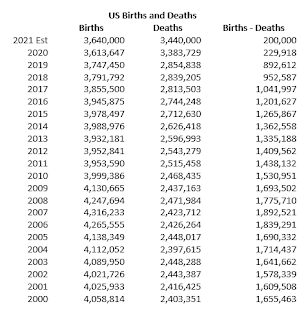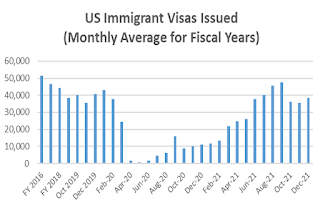by Calculated Risk on 2/11/2022 09:02:00 AM
Friday, February 11, 2022
Lawler: Update on US Demographic Drivers in 2021
From housing economist Tom Lawler: Update on US Demographic Drivers in 2021
Births: Provisional data from the CDC show that US births totaled 978,000 in the third quarter of 2021, up 2.8% from the comparable quarter of 2020. While births in the first nine months of 2021 were down 0.18% from the comparable period of 2020, the trend in births began increasing in the second half of last year. Assuming this trend continued through last quarter – and adjusting for the normal seasonal pattern of births – a “best guess” for total US births in 2021 would be about 3.64 million. That level would be about 0.7% above 2020’s historically low level, though it would still be the second lowest annual number of births since 1981.

Net International Migration: While there are no timely data on net international migration, there are some indicators that suggest that US immigration increased significantly in the second half of last year from the incredibly low levels of the previous 18 months.

The U.S Department of State’s data on monthly immigrant visa issuance show that such issuance, which was incredibly low in the last nine months of 2020 and the first few months of 2021, increased significantly beginning in the Spring of last year.

If that were the case, and if the birth and death numbers I showed in the above were correct, then the US resident population last year would have increased by 650,000, or 0.2%. While such growth is historically extremely low, it is actually somewhat higher than the Census estimate for growth from 7/1/2020 to 7/1/2021 (392,665, or 0.1%).


